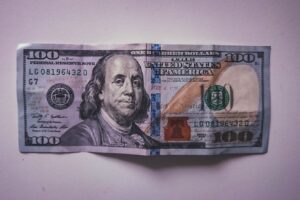Sometimes, life gets expensive. A little bad luck or a twist of fate can hit us right in the checkbook and challenge us to live within our budget.
An emergency fund may help us handle major financial disruptions. For the minor ones, a rainy day fund may suffice.
A rainy day fund and an emergency fund differ in scale, but not purpose. Both funds are designed to fully or partly absorb sudden costs. An emergency fund contains enough cash to help a household through a sudden financial crisis: a serious illness, a job loss. A rainy day fund is built in anticipation of certain expenses, rather than as a response to unforeseen emergencies. It may be created just to deal with one probable future expense.
As an example, think of a couple living in a desert community not far from a normally shallow or dry creek. Most years, the creek is no bother – but in two of the past 12 years, summer monsoons have caused the creek to swell, with a little water creeping into their backyard, patio, and kitchen on both occasions. Wisely, they start a rainy day fund to deal with the potential expenses that could arise from that impending rainy day.
Rainy day funds can address all kinds of financial inconveniences. Cars need service and repair; a rainy day fund dedicated to auto maintenance may help allay costs. Dentalwork can become expensive. So can veterinary bills. College textbooks seem to be pricier each year.
A rainy day fund can be built gradually, if preferred. Think $20 or $50 a month. Or, you can devote a lump sum to one. The cash can go into a savings account, a money market account that gives you the ability to write checks, or an interest-bearing checking account.
How about an investment account or a certificate of deposit? That idea could have more downside than upside. A rainy day fund is not only about saving money, but easily accessing it. A CD gives you the chance to grow your invested assets, but if you want to quickly withdraw those assets, you may end up with a loss stemming from an early withdrawal penalty. Similarly, you could end up withdrawing less from a brokerage account than you put into it, due to investment underperformance.1
Newly revised data from the Bureau of Economic Analysis shows that Americans saved 6.7% of their incomes during 2016-17. This is encouraging. It suggests that consumers are being prudent, building cash reserves for both financially sunny and rainy days.2
Citations.
1 – studentloanhero.com/featured/times-cd-work-for-your-savings/ [7/10/18]
2 – bloomberg.com/news/articles/2018-07-27/americans-have-been-saving-much-more-than-thought-new-data-show [7/27/18]
Photo by freddie marriage on Unsplash
This material was prepared by MarketingPro, Inc., and does not necessarily represent the views of the presenting party, nor their affiliates. This information has been derived from sources believed to be accurate. Please note – investing involves risk, and past performance is no guarantee of future results. The publisher is not engaged in rendering legal, accounting or other professional services. If assistance is needed, the reader is advised to engage the services of a competent professional. This information should not be construed as investment, tax or legal advice and may not be relied on for the purpose of avoiding any Federal tax penalty. This is neither a solicitation nor recommendation to purchase or sell any investment or insurance product or service, and should not be relied upon as such. All indices are unmanaged and are not illustrative of any particular investment.







